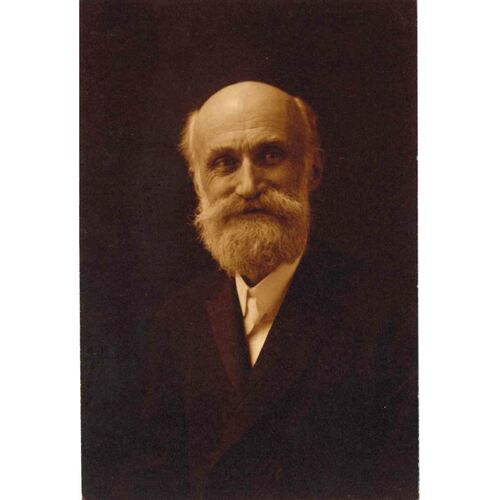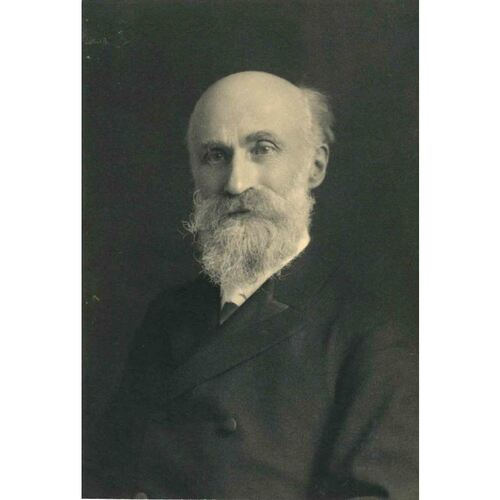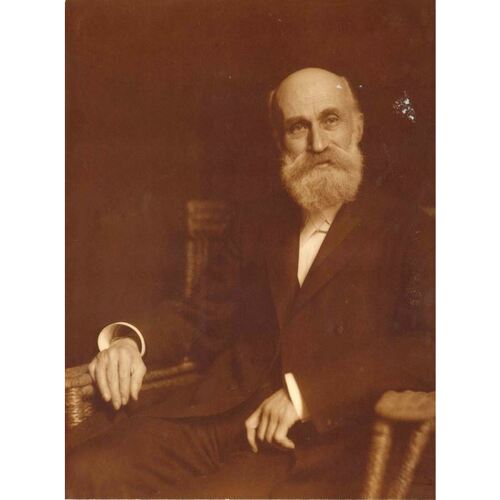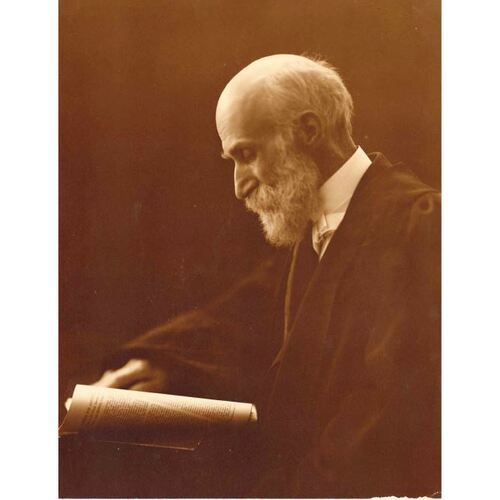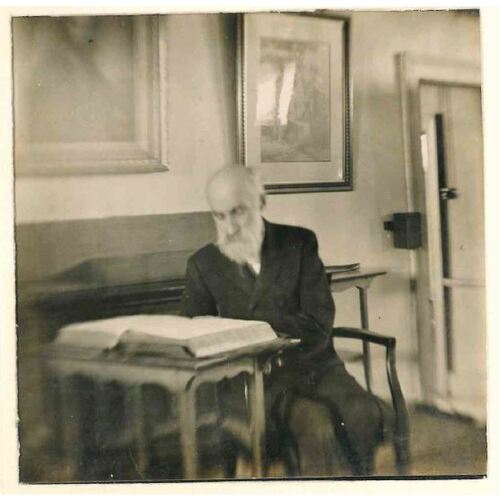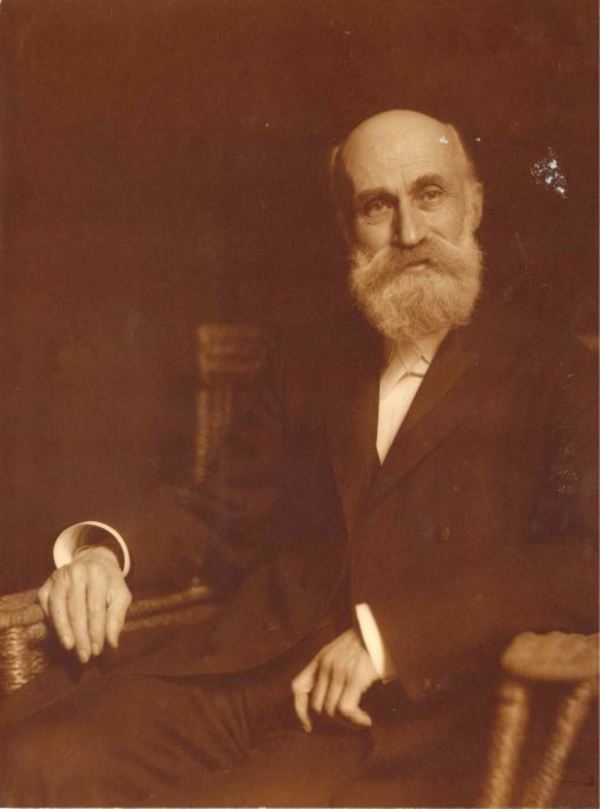
Source: Link
BARNES, WILLIAM SULLIVAN, Unitarian minister; b. 16 June 1841 in Boston, only child of William Ham Barnes, a Baptist minister, and Lydia Ann Yetton; m. 1864 Mary Alice Turner, and they had two sons and one daughter; d. 2 April 1912 in Montreal.
William Sullivan Barnes was educated in Boston for the Baptist ministry, and was ordained in 1864. For three years he served a congregation in Melrose, Mass., but his liberal outlook proved unacceptable to influential members and he was forced to resign. In 1869 he was called to the Unitarian church in Woburn.
Ten years later Barnes was invited by the Unitarians of Montreal to succeed John Cordner*, whose long and distinguished ministry had established a congregation which included many leading citizens. In a city noted for its high standards of pulpit oratory, he was soon recognized as outstanding. He preferred to preach without notes, and in due course substituted a platform for the pulpit, which was donated to a Catholic church. Large numbers of people who had no intention of becoming Unitarians flocked to his services. Unlike Cordner, who had stressed the distinctiveness of Unitarianism as rationally preferable to conventional Protestantism, Barnes spoke simply of following the path of life shown by Jesus Christ. “His value to the world,” he said, “is that he has been elected by . . . the reverent faith of the generations as . . . the supreme example of what it is to live.”
Barnes demonstrated in his everyday living that the choice of Jesus as a model was no mere rhetorical device. His deep spirituality and generous unselfishness were widely recognized, and the term “Christ-like” was frequently used to describe him. Despite his physical frailty, his natural shyness and diffidence, and his lifelong struggle with asthma, he became, as a newspaper put it in a leading article at the time of his death, “the foremost apostle in Montreal of that deepest spiritual life in which religion and beauty . . . are merged in an inseparable unity.”
The two major influences on his early thinking were his acceptance of the Darwinian theory of evolution and the application of critical methods to the study of the Bible. Later, he focused much more strongly on the expression of religion through the arts. His lectures on the poets drew large audiences, but it was through his presentations of the visual arts, including lectures to the Montreal branch of the Women’s Art Association of Canada, that he became famous. The citation which accompanied the lld he received from McGill University in 1909 referred to “his attainments in arts and letters, his active interest in the diffusion of culture and his devoted services to all that concerns the spiritual life of the community.”
He committed little to writing, and his lack of interest in denominational promotion and in institutionalism generally caused the effective strength of the congregation he had inherited to shrink drastically during his tenure. His most durable legacy was the church building that was completed a year before his retirement in 1909. Like the edifice it replaced, it was named Church of the Messiah. Designed by Edward* and William Sutherland Maxwell, it expressed through its architecture and artistic fitments Barnes’s ideals of beauty in worship and life. After his death it was enriched by a huge stained-glass window dedicated to his memory. The building was destroyed by fire in 1987.
Few of William Sullivan Barnes’s sermons have survived. A typescript of several texts dating from 1897 is available at the Unitarian Church of Montreal Arch. Part of a sermon appears in the Gazette (Montreal), 31 Oct. 1899, and another, “The beauty of holiness,” first published in 1912, has been reissued in A century and a half: a collection of sermons by ministers of the Unitarian Church of Montreal to celebrate its sesquicentennial (Montreal, 1992), 23–31. In addition, Barnes is the author of “The Unitarian movement in Canada,” in Canada. an encyclopædia (Hopkins), 4: 128–30.
NA, MG 29, D61. Unitarian Church of Montreal Arch., W. N. Evans, history of the first half-century of the congregation in Montreal, 1892; N. N. Evans, history of the second half-century of the congregation in Montreal, 1932; Minute-books; Scrapbook. Gazette, 4 April 1912. F. R. Griffin, “The dedication of the Barnes memorial window,” A century and a half, 33–39. S. B. Snow, “William Sullivan Barnes,” Heralds of a liberal faith, ed. S. A. Eliot (4v., Boston, 1910–52), 4: 27–30.
Cite This Article
Phillip Hewett, “BARNES, WILLIAM SULLIVAN,” in Dictionary of Canadian Biography, vol. 14, University of Toronto/Université Laval, 2003–, accessed April 4, 2025, https://www.biographi.ca/en/bio/barnes_william_sullivan_14E.html.
The citation above shows the format for footnotes and endnotes according to the Chicago manual of style (16th edition). Information to be used in other citation formats:
| Permalink: | https://www.biographi.ca/en/bio/barnes_william_sullivan_14E.html |
| Author of Article: | Phillip Hewett |
| Title of Article: | BARNES, WILLIAM SULLIVAN |
| Publication Name: | Dictionary of Canadian Biography, vol. 14 |
| Publisher: | University of Toronto/Université Laval |
| Year of revision: | 1998 |
| Access Date: | April 4, 2025 |


